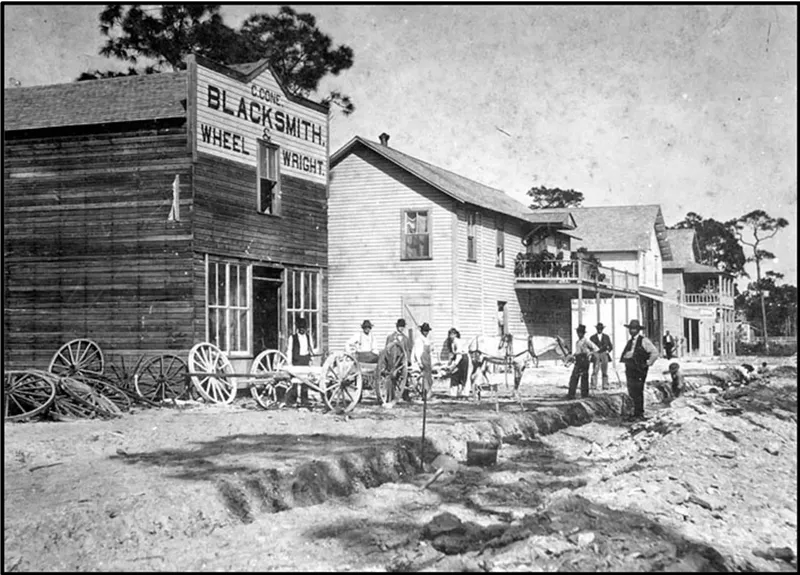In the late 19th century, Miami was a fledgling city, a tropical paradise emerging from the wilderness of South Florida. Yet, in 1899, this burgeoning haven faced a dire threat: a yellow fever epidemic that tested the resilience of its residents and reshaped its trajectory. The outbreak, one of the last major yellow fever epidemics in the United States, revealed both the vulnerabilities and the tenacity of a city on the cusp of modernity.
The Spark of Crisis
Yellow fever, a viral disease transmitted by the Aedes aegypti mosquito, was a scourge of the 19th century, particularly in warm, coastal regions like Miami. By 1899, the city was a small but growing hub, with a population of around 1,500, fueled by the recent arrival of Henry Flagler’s Florida East Coast Railway. The railway connected Miami to the north, bringing commerce, settlers, and, inadvertently, disease.
The epidemic likely began in the summer of 1899, when cases of fever, chills, and jaundice—hallmarks of yellow fever—emerged among residents. At the time, the cause of yellow fever was unknown; the mosquito vector would not be confirmed until 1900, thanks to the work of Dr. Walter Reed and his team. Without this knowledge, Miami’s leaders and residents faced the outbreak with limited tools, relying on quarantine, sanitation, and hope.
Quarantine and Isolation
As cases mounted, panic gripped the city. Miami’s response was swift but severe: a strict quarantine was imposed. The city was effectively sealed off, with armed guards posted at roads and waterways to prevent entry or exit. Train service, the lifeblood of Miami’s economy, was halted, isolating the city from supplies and communication. Within Miami, infected individuals were confined to their homes or makeshift hospitals, while healthy residents were urged to stay indoors.
The quarantine was a double-edged sword. It slowed the spread of the disease but crippled the local economy. Businesses shuttered, and food shortages loomed as supplies dwindled. For a city already struggling to establish itself, the isolation threatened to undo years of progress. Yet, the measures were deemed necessary, as yellow fever’s mortality rate could reach 50% in severe outbreaks.
Community in Crisis
Despite the hardship, Miami’s residents displayed remarkable solidarity. Local leaders, including early pioneers like Julia Tuttle, rallied to support the afflicted. Volunteers risked their lives to care for the sick, delivering food and medicine to quarantined households. The city’s small medical community, led by figures like Dr. James Jackson, worked tirelessly, though their treatments—often limited to quinine, whiskey, and bed rest—offered little relief.
The epidemic also exposed social divides. African American and Bahamian communities, often living in crowded, less sanitary conditions, faced higher infection rates. Yet, their contributions to the city’s survival were undeniable, as many worked as laborers and caregivers during the crisis. The outbreak underscored the need for better infrastructure and public health measures, lessons that would shape Miami’s future.
The Turning Point
By late 1899, the epidemic began to wane, likely due to a combination of quarantine measures, cooler weather, and sheer luck. The exact number of cases and deaths remains unclear, as record-keeping was spotty, but estimates suggest hundreds fell ill, with dozens succumbing. When the quarantine was lifted, Miami emerged battered but unbroken.
The epidemic left a lasting mark. It spurred investments in sanitation, including improved drainage to reduce mosquito breeding grounds. It also highlighted the importance of regional cooperation, as Miami’s isolation had ripple effects across Florida. Most significantly, the crisis cemented Miami’s reputation as a city of resilience, capable of weathering existential threats.
Legacy of 1899
The 1899 yellow fever epidemic was a defining moment for Miami, a test of its spirit in its infancy. It came at a time when the city was still carving its identity, a paradise not yet fully realized. The lessons learned—about public health, community, and perseverance—laid the groundwork for Miami’s transformation into a global metropolis.
Today, as Miami faces modern challenges, from pandemics to climate change, the story of 1899 serves as a reminder of its enduring strength. In the face of crisis, the city has always found a way to thrive, turning quarantine into a stepping stone toward a brighter future.
